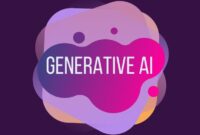Technology cost management company Tangoe analyzed $34 billion in IT spending to provide advice for finance, IT and procurement leaders. The report summarizes pricing trends and common pitfalls associated with overprovisioning, while also focusing on cloud technology and the impact of artificial intelligence.
With the cost of cloud technologies and investments in generative AI rising in 2024, the report provides recommendations for reducing budgets based on real data. Rising cloud spending is likely to be a major challenge for many organizations in 2024, according to a new report.
The main findings from the Tangoe report are:
- Optimizing cloud computing offers the greatest potential savings compared to optimizing mobile and telecommunications costs. Discounts for direct cloud connectivity can reduce costs 50-70% by comparing prices between suppliers.
- AI-powered analytics is becoming essential to identify the most cost-effective infrastructure as a service (IaaS) options in the face of complex pricing models and lack of standardization.
- Proactive FinOps strategies are recommended to combat cloud inflation caused by surges in cloud spending driven by the rise of AI.
- Lessons learned from Tangoe’s cloud cost optimization projects highlight the need for a holistic, granular view of multi-cloud environments.
Proactive approach
According to Eric Witt, vice president of strategy consulting at Tangoe, to combat cloud inflation, organizations should first take a proactive approach that includes:
- Taking effective measures to manage costs. Implement cost monitoring and detection capabilities with alerts that promptly notify stakeholders when cost thresholds are approaching, allowing them to make timely adjustments before cost overruns occur.
- Avoiding unnecessary costs. Use long-term discounts to pay less for IaaS services, or negotiate with SaaS providers to achieve lower prices through volume discounts.
- Optimization of use. For example, properly identify and take advantage of IaaS pausing features to ensure that you only use services when needed rather than constantly consuming and wasting cloud resources.
- Consolidate and deduplicate SaaS. Identify shadow software usage to standardize SaaS adoption based on a limited list of tools. Additionally, SaaS optimization coupled with cloud security initiatives will help accelerate these efforts, as security awareness and cost optimization work in the same direction.
Myths and misconceptions about cloud spending
There is no shortage of myths and misconceptions regarding cloud computing costs and how organizations should manage them to achieve the best business results.
“The biggest misconception is that you think your cloud costs are under control, but they are not,” says Witt.
He notes that everyone has cloud expenses—it’s a natural byproduct of innovation. As businesses grow, there is a need for cloud usage to expand as well. At the same time, for organizations where cloud losses occur at the very beginning, growth only increases these losses and costs exponentially.
According to Witt, IT managers are often faced with large bills and think it’s just the cost of doing business. They don’t understand how wasteful cloud innovation can be and that there are effective ways to manage costs if you know how to use them.
“If left unchecked, cloud costs can jeopardize the long-term financial sustainability of innovation,” says Witt.
Another misconception is that cloud spending can be optimized with people and spreadsheets. Witt believes AI-powered tools are needed to compare services across providers and model what-if scenarios to understand which configurations offer the best deal. “When there are a million ways to purchase one service from one provider, humans are no longer the best purchasing tool,” he says.
How to Choose Cloud Providers to Get the Best Savings
The report highlights major changes in cloud infrastructure competition. Organizations can use this competition to find the best savings and improve their cloud spend.
Because competition among cloud service providers is so intense, organizations must understand the pricing models, discount options and terminology each provider uses, offering reduced prices in exchange for long-term commitments and higher usage levels, Witt said.
He notes that the major cloud providers provide similar services, which can make the decision difficult: “It often comes down to price and features. At the end of the day, it all comes down to who can give you the best long-term offer and where their data centers are located – sometimes that matters too.”





